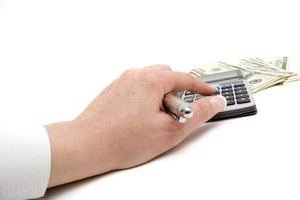Cost of Products
The cost price of the enterprise's products, in fact, represents the entire amount of direct costs that are directly related to production, as well as all costs for the creation and sale of products.
Cost of production enterprises includes direct costs for materials, wagesemployees and variable costs in the form of material costs, depreciation of fixed assets, salaries of primary and auxiliary personnel, as well as overheads arising from the needs of production and sales of products.
There are such types of prime cost as a full and production cost.
The cost price of the enterprise's products is oneof the most significant and important indicators of the firm's performance. It is used in financial planning in order to calculate profits, as well as the profitability of different types of products and the total volume of sales.
The total cost price all products that are planned for release,is reflected in the cost estimate for production costs and sales of products. In this case, the total cost price differs from the cost of the products sold. The difference that exists between these indicators is due to the fact that there are balances of a part of the unrealized output, which remains at the beginning (end) of the target period.
In the event that the proceeds from the sale appearreceipt of funds to the account of the manufacturer (or to the cashier's office), the balances of products that were not sold at the beginning of the period include funds in settlements, goods in storage and finished goods in warehouses.
To determine the full cost, these balances are recorded at the production cost for the reporting period in the amount of their actual availability.
The cost price of the enterprise's products in cash expresses the costs of the enterprise for the production of products. Therefore, the cost is differentiated between planned and actual.
When calculating the planned cost price, the maximum costs that are included in the plan are included in it. Actual production costs corresponds to the amount of funds actually spent on output.
The profit of an enterprise depends not only on the qualitytechnologies and industrial processes, product excellence and management efficiency of production processes, but also from cost management. therefore cost accounting is in the center of attention of representatives of all accounting schools.
The development of the economy as a whole is determined by developmentits separate links - industrial enterprises. Their work and efficiency is determined by management activities, thanks to which the enterprise receives economic independence and competitive position among other market participants.
Efficiency of cost management especially relevant in the context of the need to adapt to the rapidly changing environmental conditions.
The very concept of "cost management" today is not yet very widespread, as more attention is paid to accounting and accounting aspects.
Managing the cost of production is understood the process of its continuous accounting, planning, analysis and control, as a result of which management decisions aimed at optimizing and reducing costs are developed.
Cost management includes a system of measures toinfluence on certain aspects of the enterprise's activities with the aim of increasing its efficiency and maximizing the possible increase in profits. The management process consists of planning, motivation, organization and control functions. These management functions are combined by communication processes, as well as the adoption of common solutions.
</ p>>

